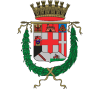There is a amazing number of world-class doctors working at Padua University’s medical clinics. All of them familiar with the latest surgical techniques, they often present papers at international conferences and may even be holders of medical patents themselves. This undisputed leadership in the field has a long history, and is certainly no chance phenomenon.
It was here that, in the period from the sixteenth to the eigtheenth century, figures such as Andrea Vesalius, Gabriele Falloppio, William Harvey (the discoverer of blood circulation) and Giovan Battista Morgagni (the founding father of pathological anatomy), all contributed to establishing medicine as a scientific discipline.
There then followed an unbroken line of scientific luminaries, who achieved another memorable ‘first’ in 1985, when Vincenzo Gallucci – then at the peak of a career that had also seen a period of prestigious work in the USA (1964-1969) – performed Italy’s first heart transplant. The heart of a eighteen-year-old from Verona was transplanted into the chest of a carpenter, Ilario Lazzari, from the small town of Fontaniva; the recipient would then live on until 1992.
Thus Padua played its part in the field of heart transplant surgery, which had begun with the South African surgeon Christiaan Bernard in 1969.

Padua University can also boast the first permanent anatomy theatre in the world. Dating from 1594, this was designed by Girolamo Fabrici d’Acquapendente – an anatomist, surgeon, physiologist, and personal doctor to Galileo – who taught at the university for fifty years. The theatre is still perfectly intact.
Moving on to the present, one cannot fail to note the remarkable trust that patients from around Italy – and abroad – have in the hospitals of Padua. The fact that so many are willing to undertake long journeys to be come here is a sure sign of their confidence in the treatment they receive.
Information about guided tours to the anatomical theatre, the Galileo Galilei’s Aula Magna, the Sala dei Quaranta (The “Hall of the Forty”) and the Aula di Medicina: click here.












